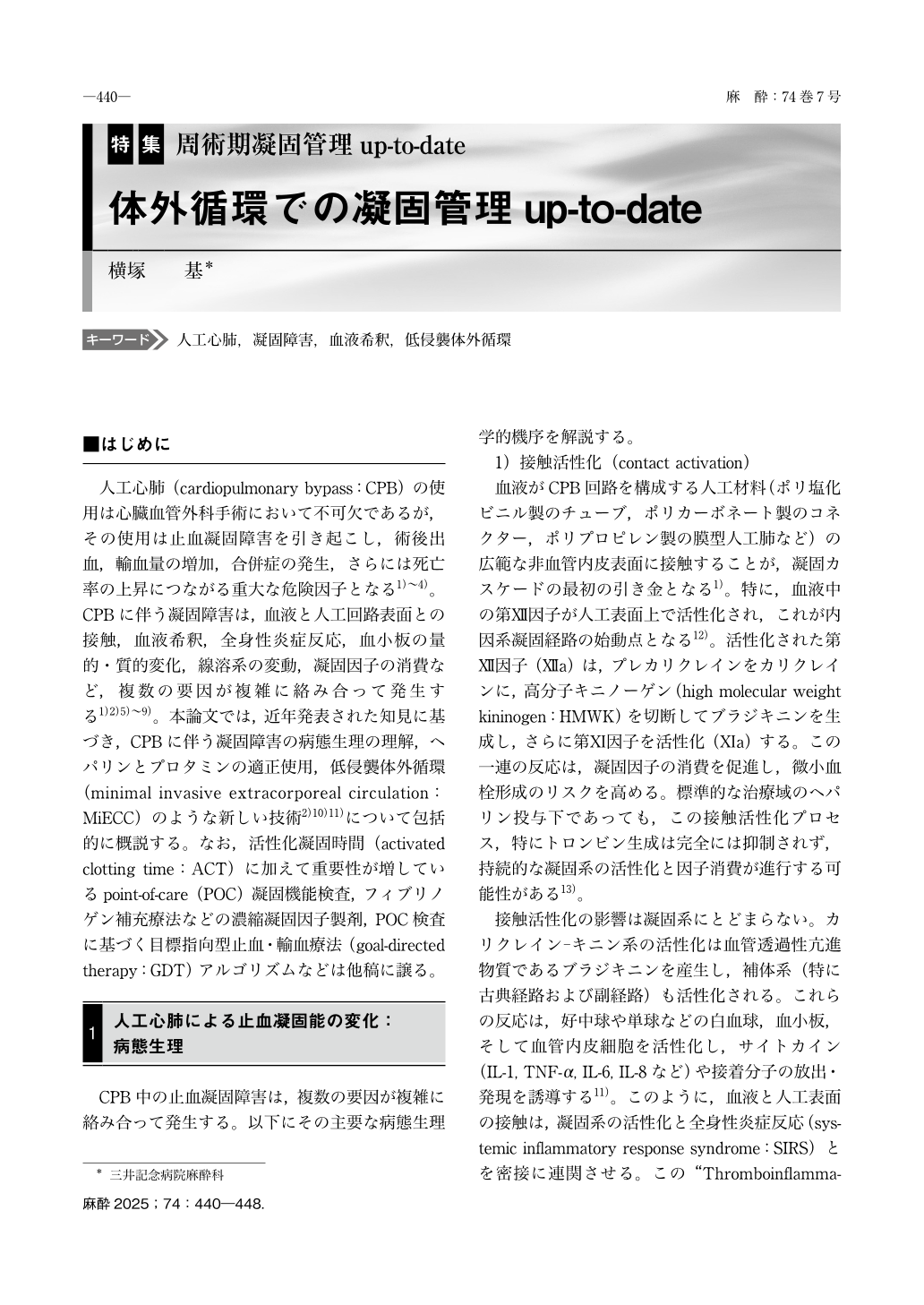Japanese
English
- 有料閲覧
- Abstract 文献概要
- 1ページ目 Look Inside
- 参考文献 Reference
はじめに
人工心肺(cardiopulmonary bypass:CPB)の使用は心臓血管外科手術において不可欠であるが,その使用は止血凝固障害を引き起こし,術後出血,輸血量の増加,合併症の発生,さらには死亡率の上昇につながる重大な危険因子となる1)~4)。CPBに伴う凝固障害は,血液と人工回路表面との接触,血液希釈,全身性炎症反応,血小板の量的・質的変化,線溶系の変動,凝固因子の消費など,複数の要因が複雑に絡み合って発生する1)2)5)~9)。本論文では,近年発表された知見に基づき,CPBに伴う凝固障害の病態生理の理解,ヘパリンとプロタミンの適正使用,低侵襲体外循環(minimal invasive extracorporeal circulation:MiECC)のような新しい技術2)10)11)について包括的に概説する。なお,活性化凝固時間(activated clotting time:ACT)に加えて重要性が増しているpoint-of-care(POC)凝固機能検査,フィブリノゲン補充療法などの濃縮凝固因子製剤,POC検査に基づく目標指向型止血・輸血療法(goal-directed therapy:GDT)アルゴリズムなどは他稿に譲る。
The use of cardiopulmonary bypass(CPB)is an integral part of cardiovascular surgery, but its use poses a significant risk of the development of hemostatic coagulopathy, which can lead to postoperative bleeding, an increased transfusion volume, various complications, and an increased mortality rate. The coagulopathy associated with CPB is caused by a complex interplay of multiple factors, including contact between the patient’s blood and artificial circuit surfaces, hemodilution, a systemic inflammatory response, quantitative and qualitative changes in platelets, fluctuations in the fibrinolytic system, and the consumption of coagulation factors. This article provides a comprehensive overview of the current understanding of the pathophysiology of the coagulopathy that is associated with CPB, the appropriate uses of heparin and protamine, and the application of minimally invasive extracorporeal circulation(MiECC), based on recently published findings.

Copyright © 2025 KOKUSEIDO CO., LTD. All Rights Reserved.


